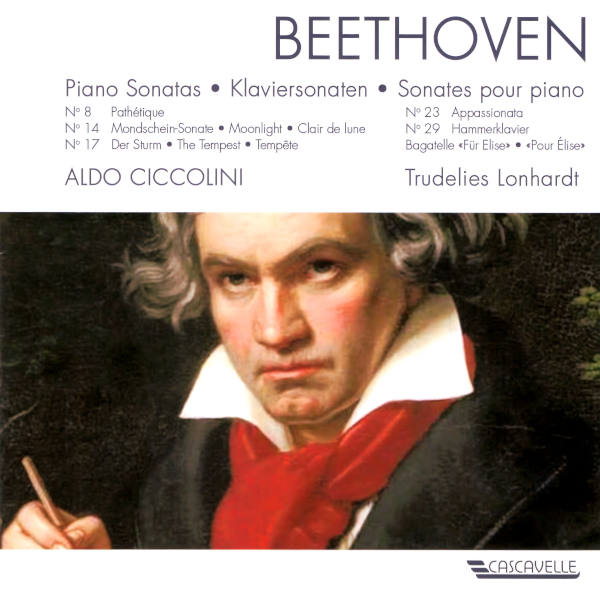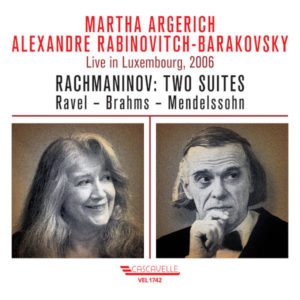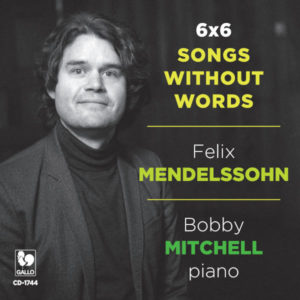Extraits / Excerpts
Beethoven: Piano Sonatas - Aldo Ciccolini - Trudelies Leonhardt
CD1:
Ludwig van BEETHOVEN: Piano Sonata No. 8 in C Minor “Pathétique” – Piano Sonata No. 14 in C-Sharp Minor, Op. 27, No. 2 “Moonlight” – Piano Sonata No. 23 in F Minor, Op. 57 “Appassionata” – Bagatelle No. 25 in A Minor, WoO 59 “Für Elise”*
CD2:
Ludwig van BEETHOVEN: Piano Sonata No. 29 in B-Flat Major, Op. 106 “Hammerklavier” – Piano Sonata No. 17 in D Minor, Op. 31, No. 2 “The Tempest”
Aldo Ciccolini, Piano – Trudelies Leonhardt, Piano*
New piano(s)
The fact that great composers have always been the driving force behind the evolution of musical instruments has never been sufficiently recognized. Beethoven propelled the pianofortes of his time towards the dimensions, acoustic power and keyboard range we now expect of modern pianos. In his eyes, the piano was the laboratory for his musical experiments. First of all, Beethoven was an incredible pianist, an uncharacteristic virtuoso in that his playing largely exceeded the natural capacities of his instrument. His contemporaries recalled that his piano sounded like an orchestra, summoning up a whole palette of extraordinary colours. What is more, Beethoven preferred to give free rein to his talent as an improviser, a habit that was commonplace for great composers – ever since the golden age of the organist.
Bagatelles, short pieces, including the famous work known as “Für Elise”, are the natural results of this practice but it also produced sonatas. Despite its classic tripartite structure, the real sense of the narrative theme of Sonata no. 8 is discovered when it is played in a semi-improvised manner. Published in autumn 1799 by Erder with the title “Grand Sonata Pathétique for the harpsichord or pianoforte” and which it is impossible to imagine played on a harpsichord, it undergoes constant metamorphoses which clearly display the freedom of its structural organization.
Sonata no. 14 was published by Capi in Vienna in 1802, a year after it was completed by Beethoven. The composer clearly indicates “quasi una fantasia” (almost a fantasy) and Rallstab gave it the name “Clair de Lune” (Moonlight Sonata) which creates a far too precise image for the first movement which more closely resembles an intimate funeral march than a moonlight. The fantasy nature explodes in Sonata no. 17, published in 1803 in Zurich by Naegeli, where atmospheric elements are almost perfectly embodied by the piano playing. Beethoven referred to a literary source — Shakespeare’s Tempest — for those who wanted a deeper understanding of the enigmatic tonal suspensions.
To those who wanted an explanation of the theme of Sonata no. 23, the “Appassionata”, a contemporary of the “Eroica” drafted in 1804, he gave the same reply. It was published in Vienna in 1807 by the Comptoir des Arts et de l’Industrie and dedicated to the Count of Brunswick. At that time, Beethoven considered it his most accomplished work. Its promethean tone and the torrential power of its movement provide a psychological portrait of the composer rather than a profession of faith in the music of the future. The Appassionata is branded as a quite unprecedented harmonic exploration.
In Sonata no. 29 written between 1817 and 1819, and using the dimensions of a major symphony, the harmonic shifts, the abundance of stylistic figures diverted from their initial purposes, the loss of tonal markers, the disregard for melody in favour of a visionary chromatic harmony, the imaginary range of a future keyboard, the splendid formal prospective, all owe their existence to art freed of all constraints produced by an incurable improviser, who, in this work, established the future of an instrument and its literature.
Jean-Charles Hoffelé[show_more more=”Show More” less=”Show Less”]
Aldo Ciccolini
Aldo Ciccolini, at the age of eighty, is one of the rare grand masters of the piano tirelessly plying the roads of a world career, never flinching from the pace of a life shaped by travel. Originating from Parma and Sardinia, it was in Naples where he was born and completed his musical studies. He has inherited the teachings of Ferrucio Busoni and Franz Liszt through his teachers. His career as a child prodigy did not for long stand in the way of the call that took him to Paris to win the Marguerite Long – Jacques Thibaud contest in 1949.
The stunning success that Aldo Ciccolini encountered in France triggered his love of French music, of which he became an ardent defender throughout the world. Aldo Ciccolini contributed to making poorly-known works (Déodat de Séverac, Massenet, Chabrier) or wrongfully forsaken works (Schubert and Scarlatti Sonatas, Years of Pilgrimage by Liszt and the Spanish composers) better known. He also recorded all of the Mozart Sonatas.
In 1990, he celebrated the publication of his new version of the Poetic and Religious Harmonies of Liszt, his favourite composer who, like him, had been a dazzling virtuoso and prophet of the depths. In 1992, he successively published the Debussy collection, then that of the Beethoven sonatas. His recordings of Janacek and Schumann in 2002, and Chopin (Nocturnes) in 2003, were awarded the Diapason d’Or. The recording of the collection of Grieg’s Lyrical Works was awarded the “Shock of the year 2005” by the World of Music.
Aldo Ciccolini, an Officer of the Legion of Honor, Officer of the National Order of Merit, Commander of Arts and Letters and holder of many distinctions, decided, as a token of his appreciation, to adopt French nationality in 1971. The following year, he accepted the position of lecturer at the Higher National Music Academy of Paris, thus discovering his calling as a teacher which he never gave up since he still gives many master classes in Italy.
Opposed to any concessions to the fads of the day, insensitive to the ploys of the media, he considers the musical art a vocation necessary to the pleasure of the listeners. The often visionary originality of his repertoire, the alchemy of his most intimate research, long prevented him from revealing his interpretation of the greatest composers.
For several years now, he has been facing the public and finally appears as one of the most powerful messengers of the genius of music.[/show_more]
- Categories
- Composers
- Interprets
- Booklet












